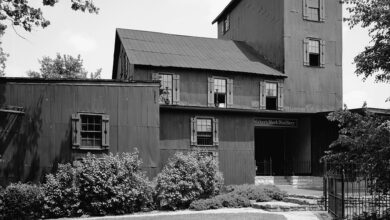Irish Whiskey 101
The Guide To Understanding Irish Whiskey
By Richard Thomas

(Credit: Richard Thomas)
Once upon a time, Irish whiskey dominated the tastes of the world. In the late 19th Century, the small island’s 28 distilleries served a global market that regarded of Irish whiskey as the finest of its kind.
Then came the rise of stiff competition from Scottish blended whisky, based on cheaper grain whisky made using Irishman Aeneas Coffey’s column still; the Irish War of Independence and the subsequent trade war with Great Britain; America’s Prohibition; the Great Depression; and, although Ireland remained neutral, the strictures and tumult of the Second World War. As they say at the Irish Whiskey Museum, “Ireland had other things to worry about” than its whiskey industry. By the 1970s, only two distilleries were left in operation: New Midleton (Jameson, Powers, Paddy, etc.) and Old Bushmills.
Yet Irish whiskey has rebounded from this nadir, popular like never before, and that popularity is driving a distillery-building boom on the Emerald Isle. With many drinkers either discovering Irish whiskey for the first time, or at least moving past Jameson for the first time, most must wonder what is it that makes Ireland, one of the five traditional whiskey-making regions of the world, and its whiskey special.

at Kilbeggan
(Credit: Richard Thomas)
Triple Distillation: Common, But Not Required.
By law, all Irish whiskey must be distilled and aged on the island of Ireland, including both Northern Ireland and the Republic of Ireland; it must be distilled to a purity of 94.8% or less from yeast-fermented grains; it must be aged in wooden casks not larger than 700 liters (185 gallons) for at least three years; and any mixture of different types of Irish whiskey must be labeled “blended.”
Note that triple distillation, or distilling the whiskey three times instead of twice, is not required. This practice, which makes the new whiskey lighter and mellower, is most often cited as what makes Irish whiskey unique, but it is not required or even universal in or particular to Ireland. Although a bedrock practice at Midleton and Bushmills, it is not so at Cooley (Ireland’s third major distillery), was not in the past, and may not be so for many of the new distilleries that are sprouting up like mushrooms. Likewise, triple distillation is not unique to Ireland, as it is sometimes employed in both Scotland and the United States.
Irish Whiskey In Its Many Forms
Irish whiskey comes in three principle formats: pot still, malt and grain. Malt and grain whiskeys are almost identical to their counterparts in Scotland. The former is an all-malted barley whiskey made in pot stills, and the latter is made from a mixed mashbill, often mostly corn, in a column still. Pot still whiskey, as we shall see, is an entirely different and uniquely Irish creation.
The basic expressions of Jameson, Tullamore Dew, Bushmills and all the other major brands are blends, meaning they are mixtures of two or more of the three types of Irish whiskey. Irish expressions also embrace single malts and single grains, just like in Scotland, as well as single pot still (all pot still, coming from the same distillery).
Also like in Scotland, the whiskey is matured in mostly, but not exclusively, used barrels. Ex-bourbon barrels predominate, but Irish whiskey uses a smattering of ex-sherry, ex-port, ex-wine and ex-madeira casks, as well as sometimes reaching for new oak, including new Irish oak.
Pot Still Whiskey And Emerald Climate
Although triple distillation is an important feature, the two signatures of Irish whiskey are its tradition of pot still whiskey and the country’s climate.
Irish pot still whiskey is not just made in copper pot stills, but also from a mixture of malted and unmalted barley. The use of unmalted barley sets pot still whiskey apart from the 100% malt whiskey common to both Ireland and Scotland, and was probably a response to the British Crown’s 1792 attempt to collect more taxes on the Irish whiskey industry by steeply raising the tax on malted barley.
The combination of malted and unmalted barley gives the resulting a whiskey a spicier character, and for many years was the preserve of Midleton whiskeys, appearing in blends like Jameson and in pure form in expressions such as Redbreast. Writer’s Tears is another example of an Irish blend using pot still whiskey.
Yet when you ask the people who actually make Irish whiskey “what makes your whiskey special,” the one feature all of them point to is not pot still whiskey or triple distillation, but the mild Irish climate. Weather has a major impact on the maturation process, and Hibernian winters are, as a rule, a couple of degrees Celsius warmer in winter and summer than those of Scotland. This is in even sharper contrast to the icy winters and steamy summers of Kentucky and Tennessee. The result is a more even maturation, producing a smoother, mellower product.
A Long Road Ahead
Although Irish whiskey has enjoyed explosive growth lately, the industry still accounts for only 6% of world whiskey sales. That is a far cry from the days when it was the world’s dominant whiskey sector, and Ireland has a long way to go before its whiskey, even Jameson, can claim to be a serious contender alongside American and Scottish whiskeys. Yet the same unique national traditions and conditions that once made Irish whiskey synonymous with good whiskey around the world are all still there, so with a little luck modern drinkers will rediscover what their grandparents and great grandparents knew.


